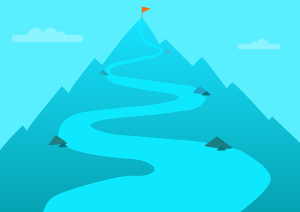Start from where you are
If the idea of developing a Research Data Services program seems intimidating, don’t worry. Everyone has to start somewhere, and as the proverb goes, the journey of a thousand miles begins with a single step. If you are new to the Library you will need to do a bit of pre-planning work to make sure you have a solid foundation of understanding, but even if you have already been working in your Library for a while it is still a good idea to know where you are starting from. This will help determine your destination, and then design your RDS program to meet the needs of your stakeholders.

Essentially, this stage of the project involves learning as much as you can about the current situation at your Library and your University. This will help you understand what you can build on, what gaps exist, and how to best craft your RDS program to meet the needs of University personnel. Some things to consider as you begin making plans are:
- Find out what workshops, and what subjects (i.e. coding, data management, etc.) are already being taught at the Library.
- Learn about existing partnerships between your library and other entities on campus.
- Get to know the people you will be working with
- Investigate conferences, trainings, and other professional development opportunities.
It might be helpful to gather knowledge and information about additional elements as well:
- Policy – does the university or any of the other academic units have policies or guidelines about how researchers manage their data?
- Partners – has the library worked with others on campus to encourage good data management practices or create relevant resources?
- Resources – webpages, research guides, publications, newsletters or any other communications that you have used to reach out to your campus.
- Planning – has your library or campus planned for new facilities, personnel or services that should be incorporated into research data services?
- Expertise – any conferences or trainings that have allowed librarians to upskill? Include a review of any outputs such as publications or surveys created as a result of these opportunities.
This initial set of information can expand to include any relevant items you see fit to include, and should be tailored to suit the needs of the RDS program you are developing. It does not require special tools or software either–often a simple word-processing document or spreadsheet will suffice, and it can be built up over time as you learn more about your Library, University, external partners, and more.
Begin with the end in mind

As you being planning your RDS program, it helps to have a clear sense of your goals and outcomes. If you begin with the end in mind, you can work from there to make sure everything you do meets that goal. This is a principle known as backwards design, and it helps you maintain focus throughout the creation of your RDS program.
Write down some key goals and objectives for your RDS program before you get too far into the planning stages. Having a clear sense of what you are working towards will help coalesce your efforts, increase buy-in from stakeholders, and ensure project success.
Chapter Learning Objectives
By the end of this “Start from where you are” chapter, you should be able to know, learn, or do the following:
Understand the importance of conducting initial inventories
List the various programs, trainings, resources, personnel, etc. at your Library and University that relate to the RDS program you intend to develop
Explain your goals for creating an RDS program and how that program will meet unaddressed needs within your Library and University.

